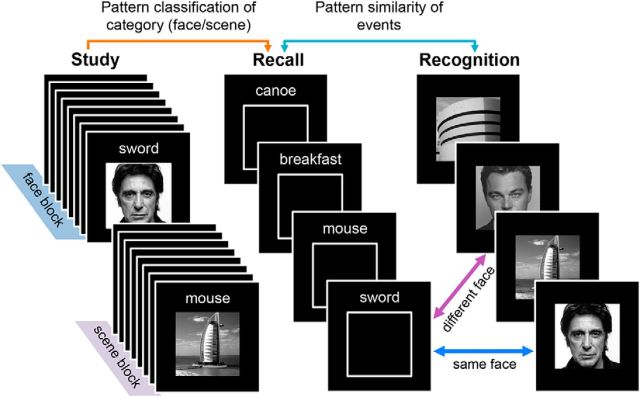Figure 1.
Experimental paradigm. During each study phase block, participants studied word–picture pairs grouped by category (i.e., eight words paired with faces and eight words paired with scenes). After study, memory for some of the word–picture pairs was tested (twice each) in a recall phase. On recall trials, a word was presented and participants attempted to recall the corresponding picture in as much detail as possible (indicating vividness of recall by button press). Next, a recognition test followed in which participants were shown pictures that had either been studied and recalled (RCL), studied but not recalled (NoRCL), or not studied at all (NEW). Participants indicated whether each picture was “old” or “new.” Participants completed a total of eight study-recall-recognition cycles, all during fMRI scanning. Pattern classifiers were trained to learn the picture categories (face vs scene) based on study-phase activity patterns and were tested on data from the recall phase. Successful classification of recall trials constituted evidence of category reactivation. In addition, patterns of activity elicited during the recall phase (word present, picture absent) were compared with patterns of activity elicited during the recognition phase (word absent, picture present) to test for event-level pattern similarity.

